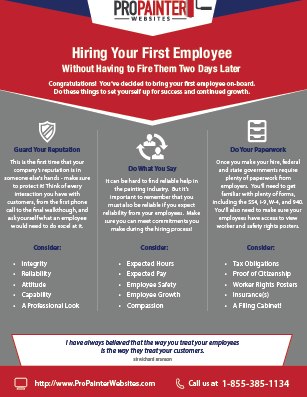Explore The Duty Of Seasonal Consider The Success Of Industrial External Painting And Uncover The Best Times To Safeguard Long Lasting Outcomes For Your Project
Explore The Duty Of Seasonal Consider The Success Of Industrial External Painting And Uncover The Best Times To Safeguard Long Lasting Outcomes For Your Project
Blog Article
Article Created By-Ford Rodriquez
When you're preparing a commercial external painting project, seasonal aspects can make or break your results. You'll intend to consider just how temperature and humidity impact paint application and drying out times. Selecting the ideal season can ensure your paint adheres appropriately and lasts longer. Yet which periods are truly the very best for this kind of work? Let's explore the key elements that can affect your project's success.
The Influence of Temperature on Paint Application
When you're intending a commercial exterior paint task, the temperature can considerably impact exactly how well the paint sticks and dries.
Ideally, you intend to paint when temperature levels vary in between 50 ° F and 85 ° F. If house painting company 's as well cold, the paint might not heal correctly, resulting in concerns like peeling or cracking.
On the other side, if it's also hot, the paint can dry also quickly, preventing proper bond and leading to an unequal finish.
You need to additionally consider the time of day; early morning or late afternoon offers cooler temperature levels, which can be much more beneficial.
Constantly examine the maker's suggestions for the particular paint you're using, as they often offer support on the optimal temperature range for optimal outcomes.
Moisture and Its Effect on Drying Times
Temperature isn't the only environmental aspect that affects your industrial external painting project; humidity plays a considerable function also. High moisture levels can reduce drying out times significantly, influencing the total quality of your paint task.
When the air is saturated with wetness, the paint takes longer to cure, which can lead to issues like bad attachment and a higher threat of mildew growth. If you're repainting on an especially damp day, be gotten ready for prolonged delay times in between coats.
It's crucial to keep track of neighborhood climate condition and strategy accordingly. Ideally, go for moisture levels in between 40% and 70% for optimal drying out.
Keeping these factors in mind ensures your job remains on track and provides a lasting surface.
Best Seasons for Commercial Outside Paint Projects
What's the best season for your commercial exterior paint tasks?
Spring and early autumn are normally your best choices. During these seasons, temperatures are moderate, and humidity degrees are usually reduced, producing perfect conditions for paint application and drying.
Avoid summer season's intense heat, which can cause paint to dry also promptly, resulting in bad adhesion and surface. Similarly, winter season's chilly temperature levels can hinder appropriate drying out and treating, taking the chance of the longevity of your paint job.
Aim for days with temperature levels in between 50 ° F and 85 ° F for ideal results. Keep in mind to inspect the regional weather forecast for rain, as wet conditions can wreck your project.
minneapolis commercial painting around these aspects ensures your paint project runs smoothly and lasts longer.
Conclusion
In conclusion, preparing your business external painting tasks around seasonal considerations can make a substantial distinction in the result. By organizing job during the optimal temperature levels and moisture levels, you'll make certain much better bond and drying times. Bear in mind to watch on local weather prediction and select the correct time of year-- spring and early fall are your best options. Taking these steps will aid you achieve a sturdy and professional finish that lasts.
